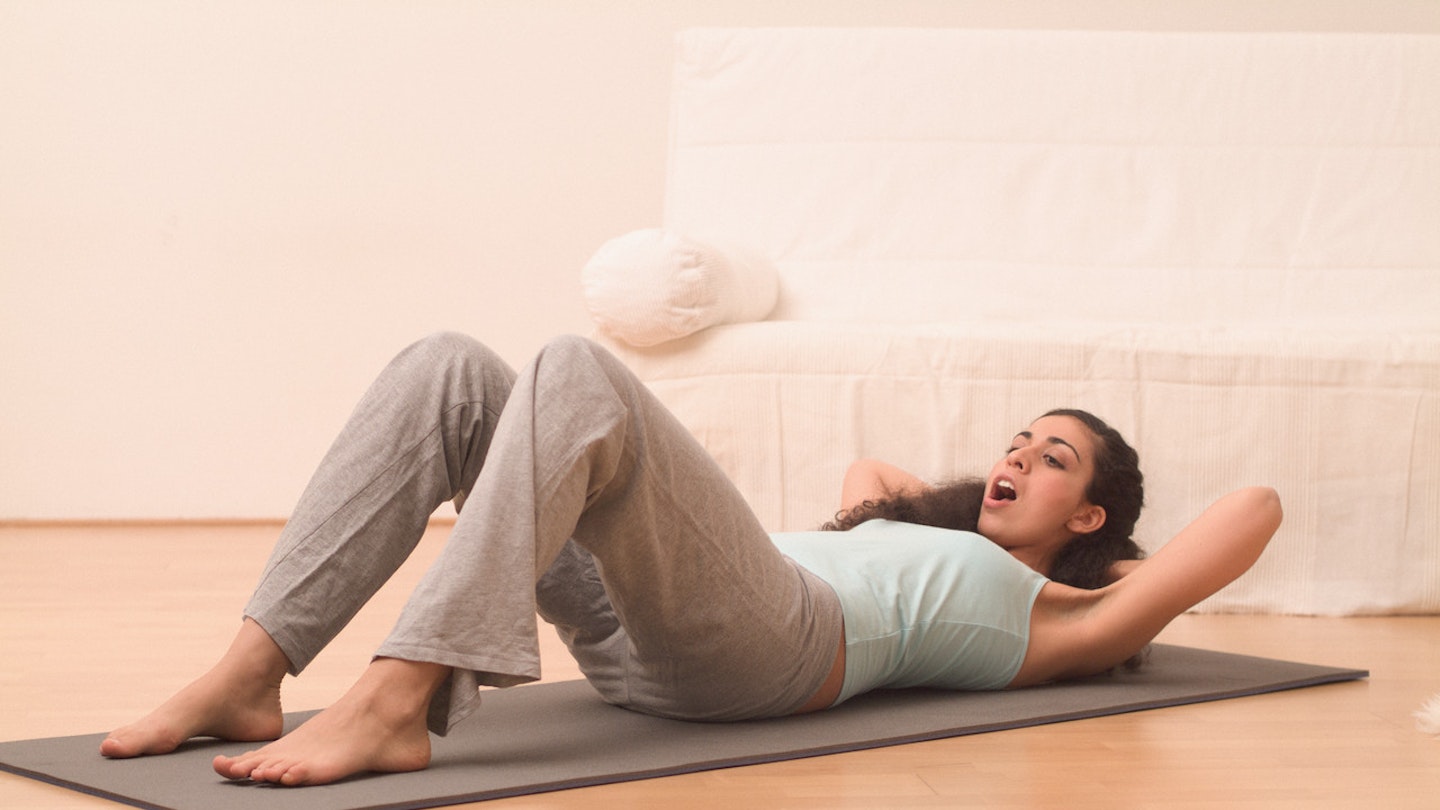Separation of tummy muscles affects one in three women after having a baby, but with the right care and exercise you can help reduce symptoms
What is it?
Diastasis recti, or the ‘tummy gap’ is caused by an expansion of muscles and connective tissues during pregnancy. ‘The gap runs down the middle of your tummy (the abdominal wall) and it’s caused by your stomach muscles expanding during pregnancy,’ says pregnancy fitness expert Jenny Burrell. It’s a very common condition and affects over 30 per cent of women after childbirth. What’s more, with the right exercises you can strengthen your abdominal muscles back into shape.
What are the symptoms?
It affects the way your tummy looks and functions – you may have a distended belly and you may experience stomach problems because your muscles no longer support the intestines. Diastasis may also give you back pain, too. But for some, they may not know you’ve got the condition until doing a very easy test. ‘You can feel if you have diastasis if you do a simple head lift then feel along the length of your midline from just under your bust line to just after your belly button, says Jenny. ‘If the midline is soft and your fingers can fit into the gap, you might have it.
What can you do?
Speak to your GP or health visitor who will be able to give you exercise advice. To begin with, you shouldn’t put any heavy pressure on your stomach muscles so be careful doing weight bearing exercises, like lifting your baby. ‘Very gentle exercise techniques, such as working on your pelvic floor muscles and breathing are the best way to help diastasis,’ says Jenny. ‘Many women who try to “get back into shape” throw themselves back into their old exercise routines, but, in fact, exercises like sit-ups and crunches will actually do more harm.’
Try pelvic floor exercises Lie down with your arms as your pillow and toes pointed. Exhale for eight seconds, you should feel your tummy coming away from the floor. Towards the very end of the breath, you should feel your pelvic floor tensing and lifting. Perform two-to-three sets of eight repetitions. But always get professional go ahead before doing these exercises and doctors advise to avoid exercise up to six weeks after giving birth. ‘Another important tip – every time you lift your baby, your move his buggy, exhale as you are lifting,’ says Jenny.
See your GP…
If you have trouble bending and lifting or experience sudden bouts of stomach or back pain.
